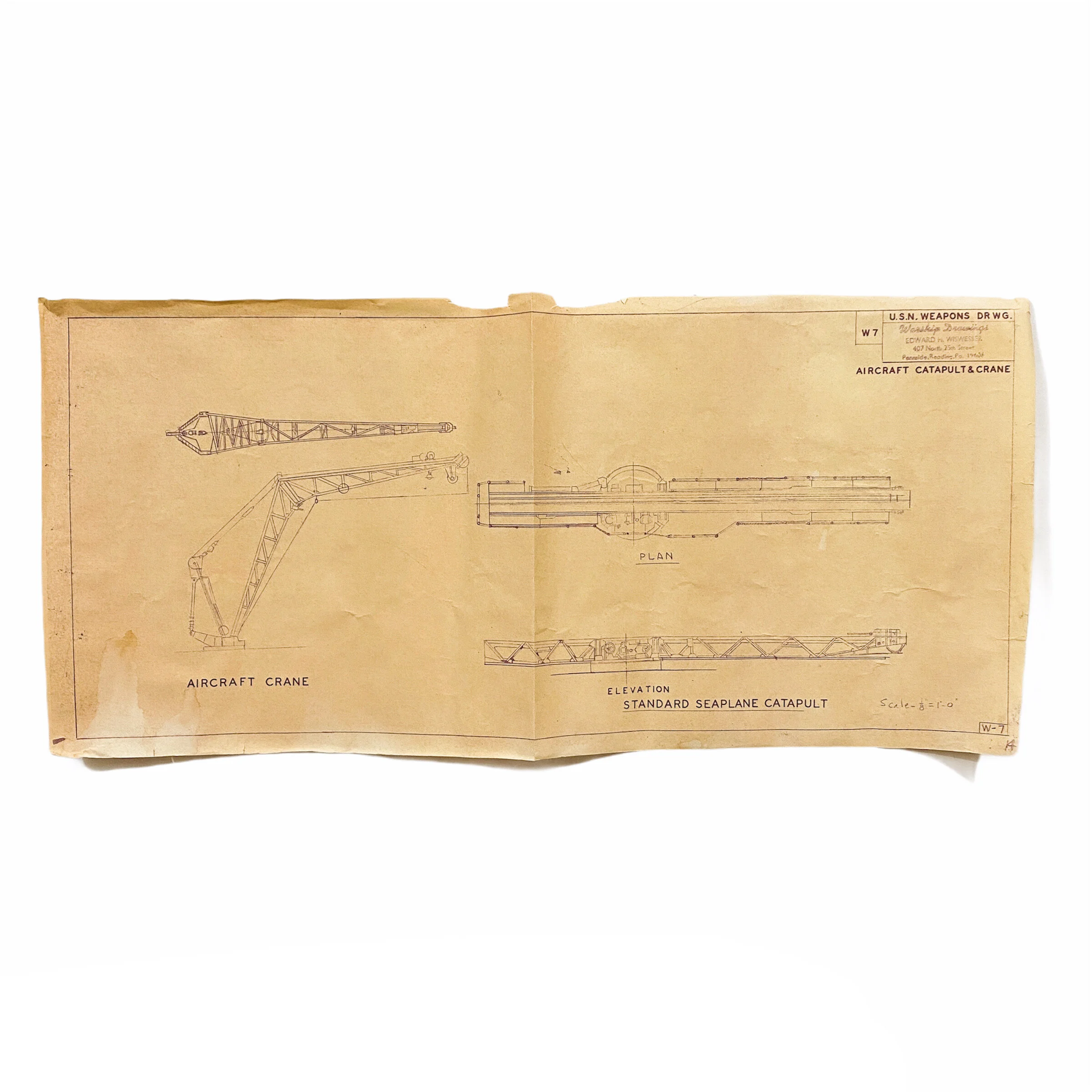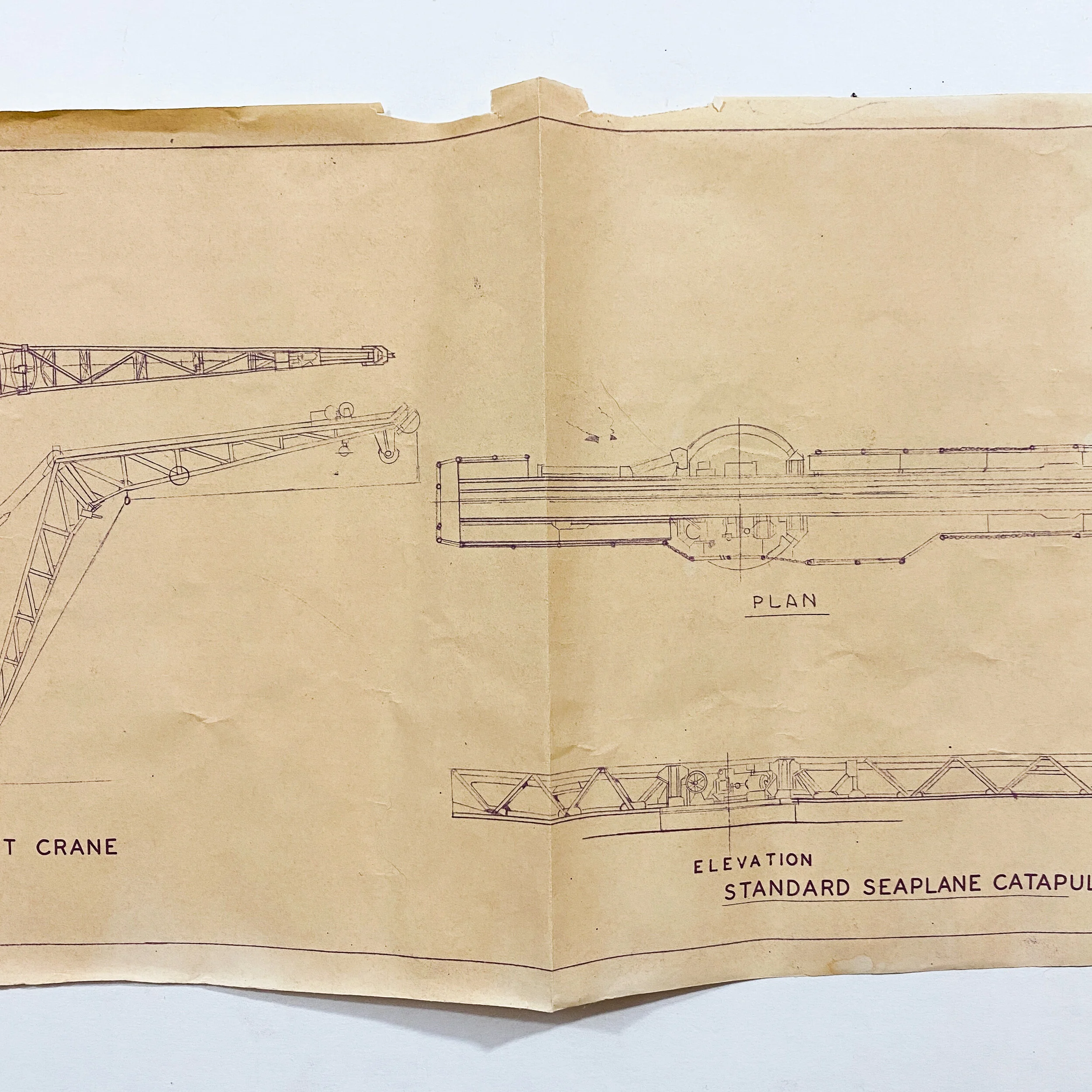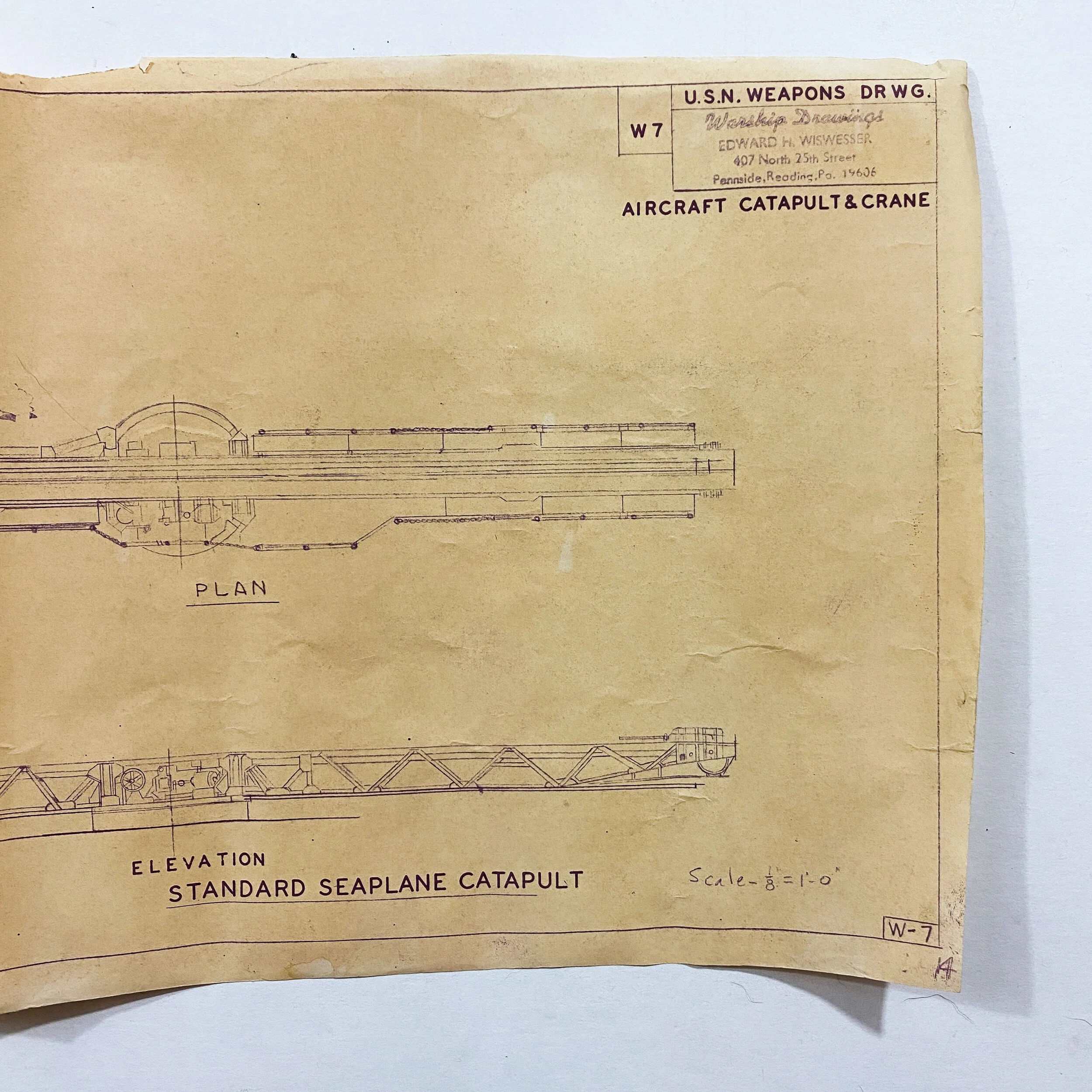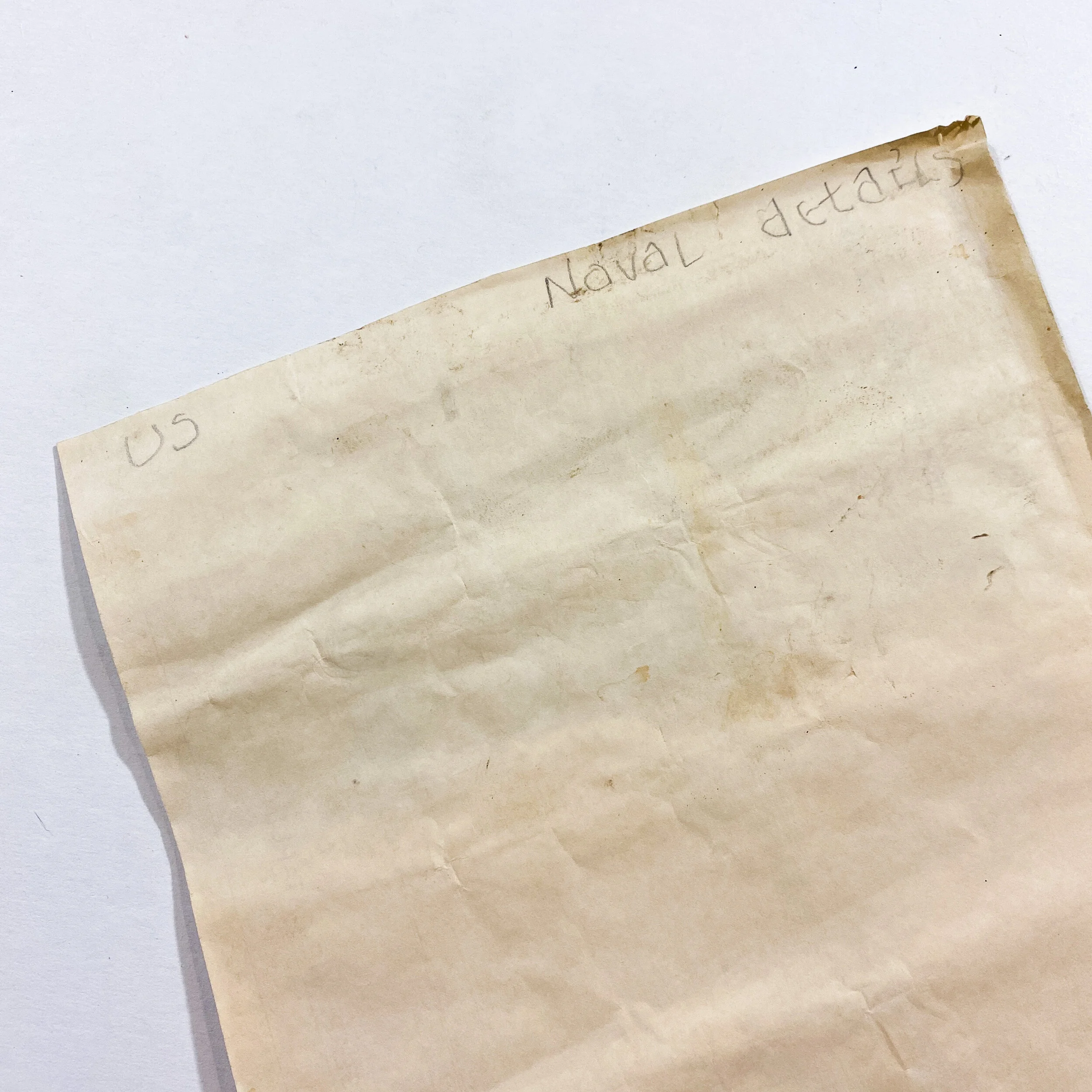Aircraft Catapult & Crane Layout Blueprint - Drawing W7 - Edward H. Wiswesser











Aircraft Catapult & Crane Layout Blueprint - Drawing W7 - Edward H. Wiswesser
From the personal blueprint collection of Edward H. Wiswesser.
Size: 20 x 9.5 inches
This blueprint comes from the blueprint collection of the famous Edward H. Wiswesser. From 1940-1946, Edward H. Wiswesser worked at the Philadelphia Naval Yard designing warships for the United States Navy, specalizing in Iowa-class battleships including his direct hand in designing the Battleships USS New Jersey and the USS Wisconsin. His design of the USS New Jersey was one of the Iowa-class "fast battleship" designs planned in 1938 by the Preliminary Design Branch at the Bureau of Construction and Repair. She was launched on December 7th of 1942 (the first anniversary of the attack on Pearl Harbor) and was commissioned on 23 May 1943. The ship was the second of the Iowa class to be commissioned by the U.S. Navy. The USS New Jersey (BB-62) ("Big J" or "Black Dragon") was the second ship of the United States Navy to be named after the US state of New Jersey. New Jersey earned more battle stars for combat actions than the other three completed Iowa-class battleships, and was the only US battleship providing gunfire support during the Vietnam War. During World War II, New Jersey shelled targets on Guam and Okinawa, and screened aircraft carriers conducting raids in the Marshall Islands. Edward H. Wiswesser other design of the USS Wisconsin (BB-64) is an Iowa-class battleship, the second ship of the United States Navy to be named in honor of the U.S. state of Wisconsin. She was built at the Philadelphia Naval Shipyard in Philadelphia, Pennsylvania and launched on December 7, 1943 (the second anniversary of the Pearl Harbor raid), sponsored by the wife of Governor Walter Goodland of Wisconsin. During her career, Wisconsin served in the Pacific Theater of World War II, where she shelled Japanese fortifications and screened United States aircraft carriers as they conducted air raids against enemy positions.
This specific blueprint is labeled as drawing number W-7 and is titled “Aircraft Catapult & Crane”. The blueprint itself is also titled ‘U.S.N. Weapons DR WG’ and is from the warship drawings of Edward H. Wiswesser himself. Drawn to a ⅛ scale, this Naval blueprint is extremely detailed showing the ins and outs of the U.S.N. aircraft crane and standard seaplane catapult. These plans would have been used in the structural construction and development of this U.S.N. innovation. The catapult was used to propel the plane off of the ship's deck, while the crane was used to retrieve it back to the ship from the water after landing. Observation seaplanes are military aircraft with flotation devices allowing them to land on and take off from water. Their primary purpose was to observe and report enemy movements or to spot the fall of shot from naval artillery, but some were armed with machineguns or bombs. Their military usefulness extended from World War I through World War II. They were typically single-engine machines with catapult-launch capability and a crew of one, two or three. Most were designed to be carried aboard warships, but they also operated from seashore harbors.
After the plane was fueled and the engine warmed up, or the engine oil pre-heated, the pilot and observer would climb into their aircraft and rev the engine at full throttle. If the instrument panel readings were satisfactory, the pilot would brace for takeoff and signal the catapult operator he was ready. The United States Navy 30 ft (9.1 m) catapult used a smokeless powder charge to accelerate the plane to 80 mi (130 km) per hour (0 to 80 in one-half second).
A capital ship preparing to recover its aircraft would steam into the wind and signal the aviator which way it would turn across the wind to provide a sheltered landing surface. When the plane was in position the ship would turn so the plane could land on the lee side as close as possible to the ship. The ship would tow a net along the water surface from a boom on the lee side, and the plane would taxi over the net so a hook on the underside of the float would engage the net allowing the plane to cut power and minimize relative movement of the plane with respect to the ship while the ship's crane hoisted the plane aboard.
The blueprint itself is in relatively good condition for its age with minor creasing and tears.
This United States Navy blueprint would make an amazing addition to any World War II or U.S. Navy collection.